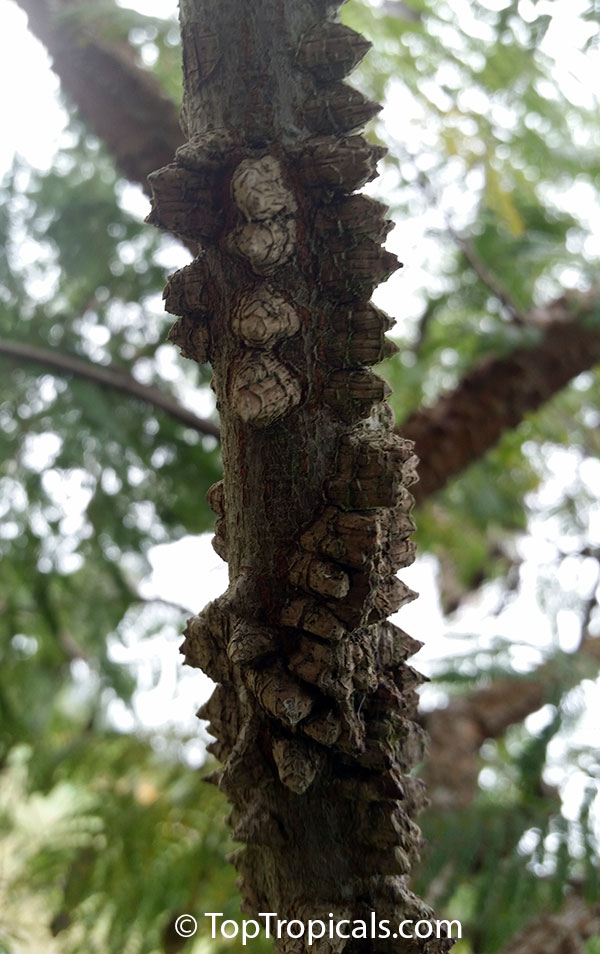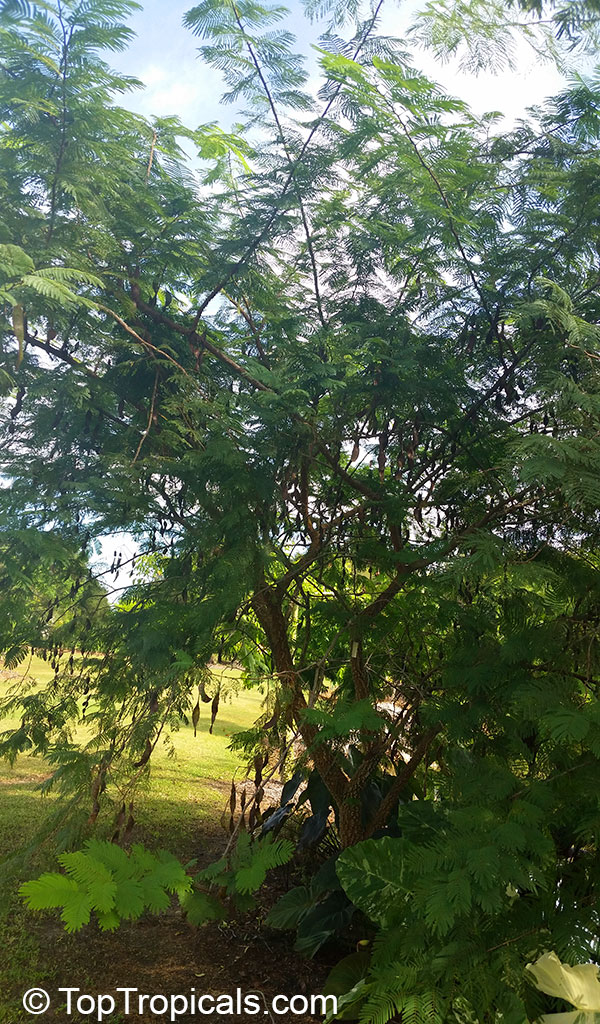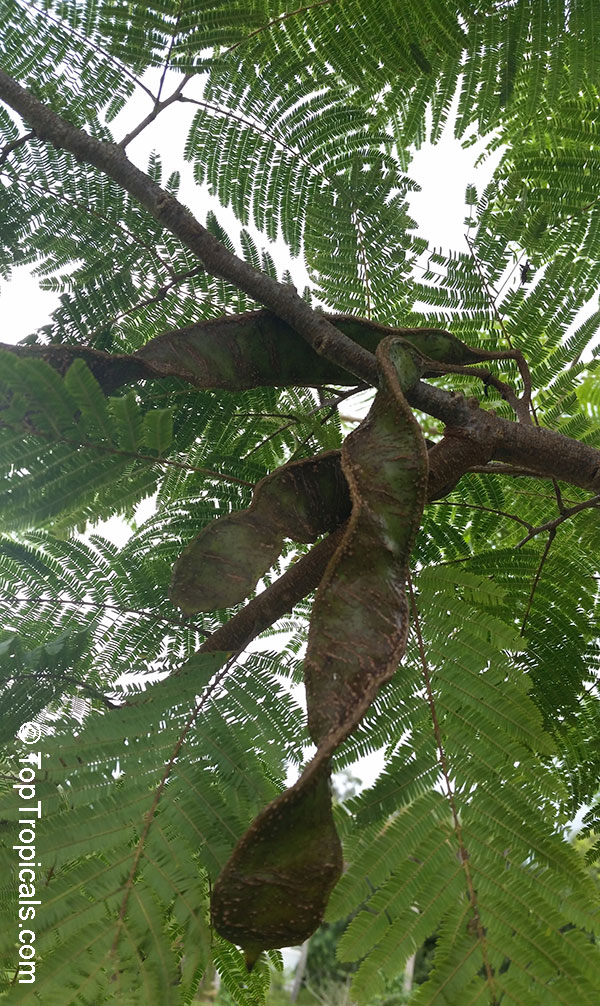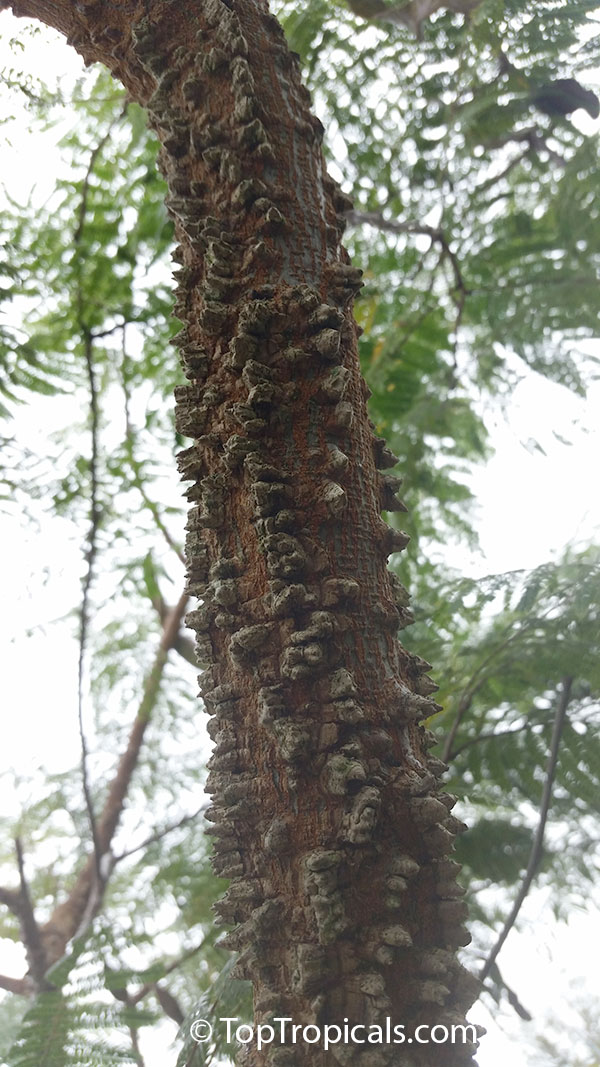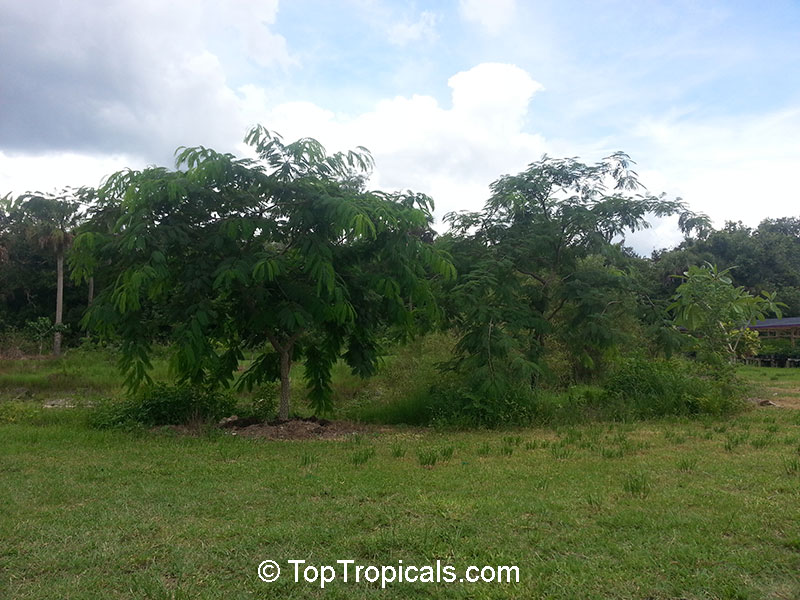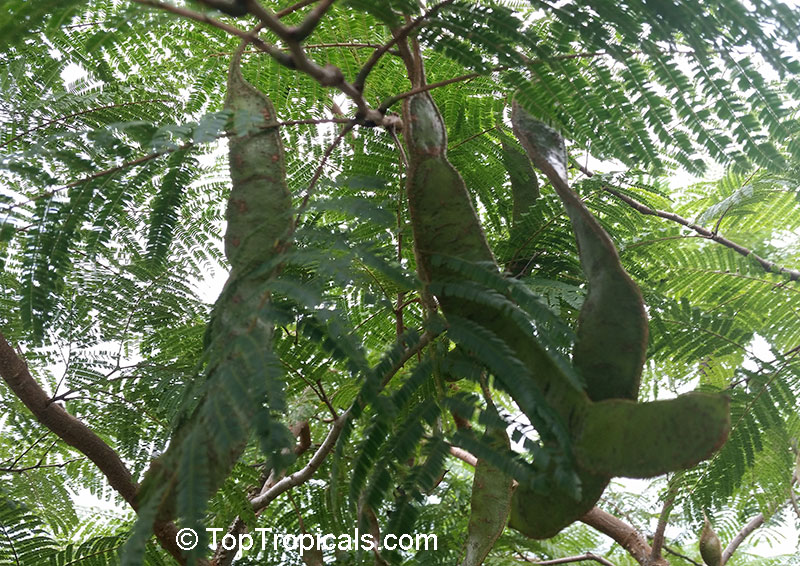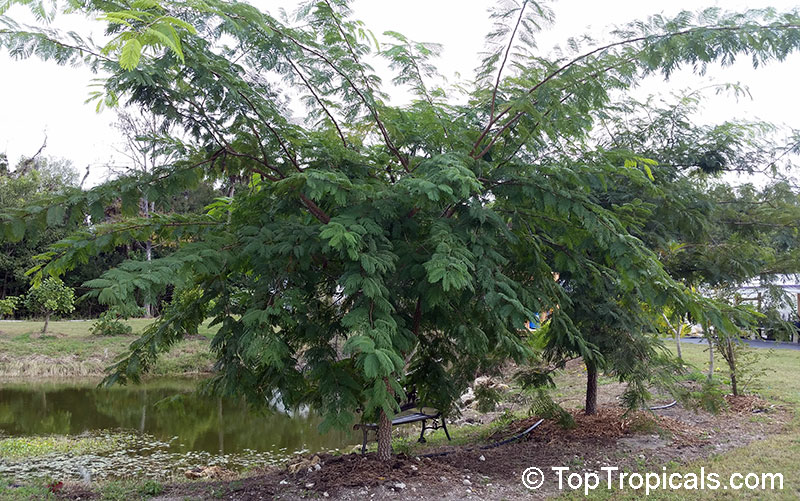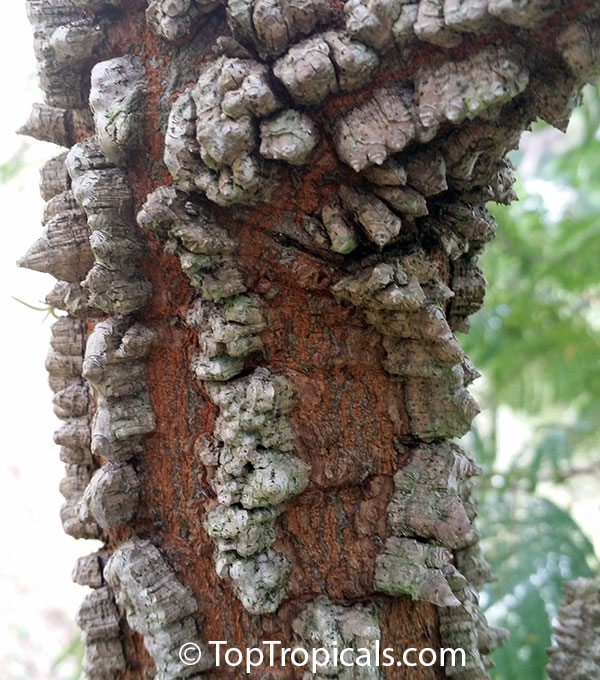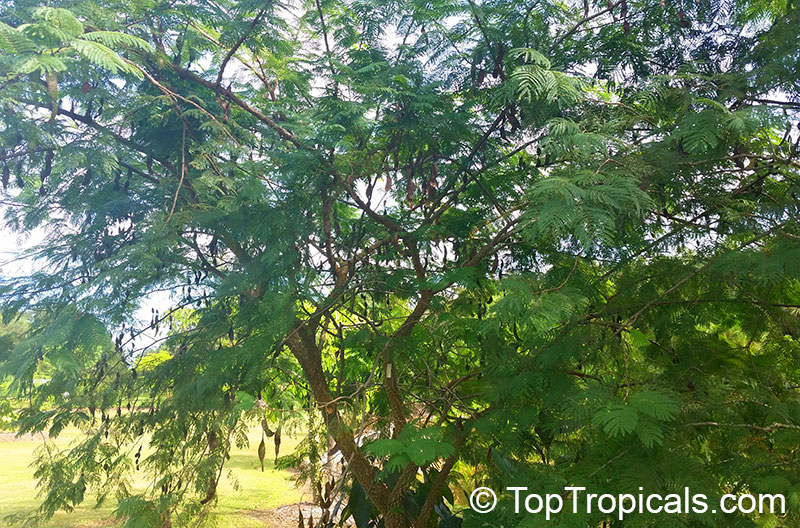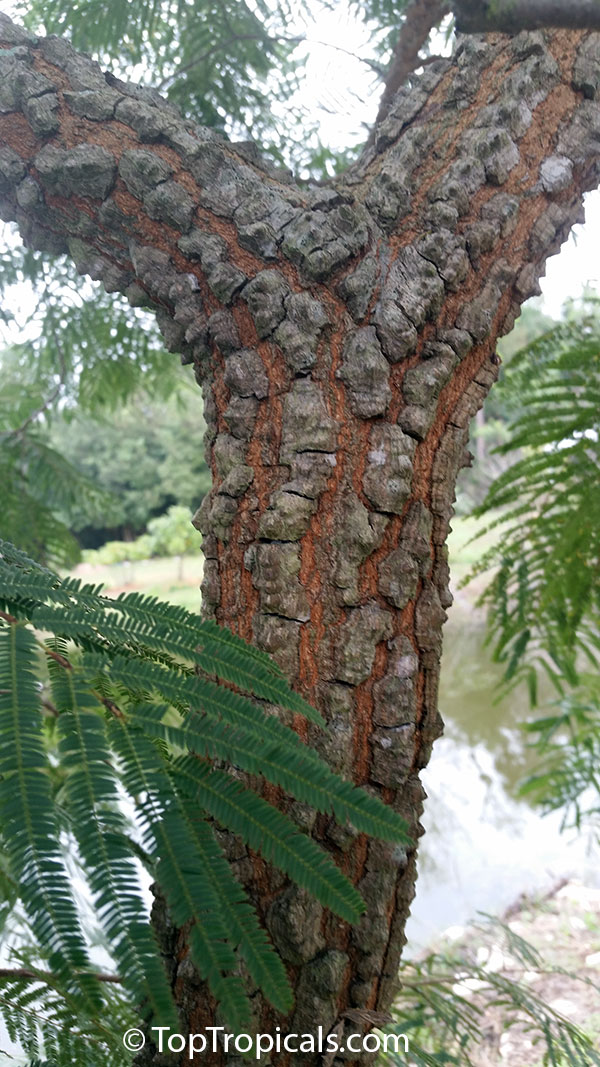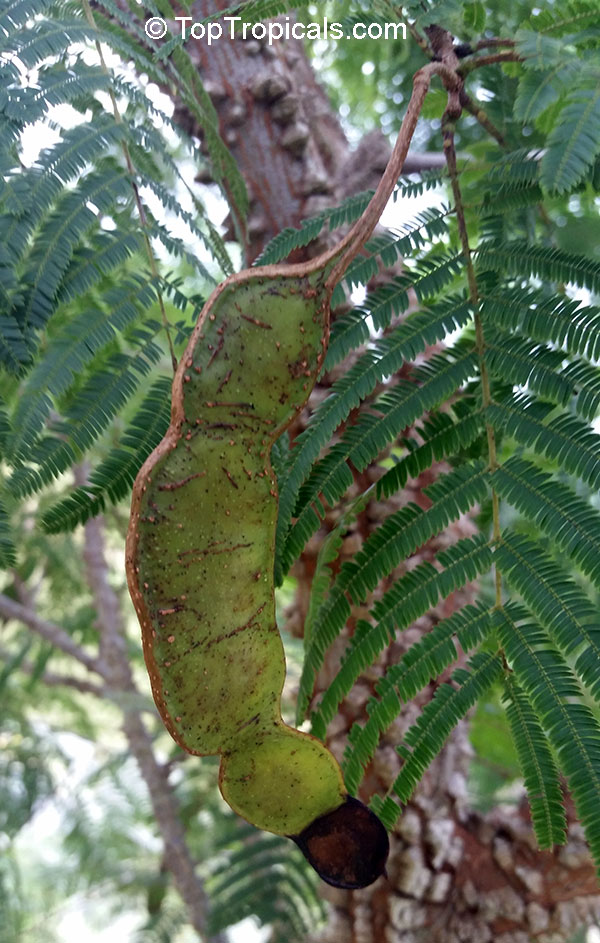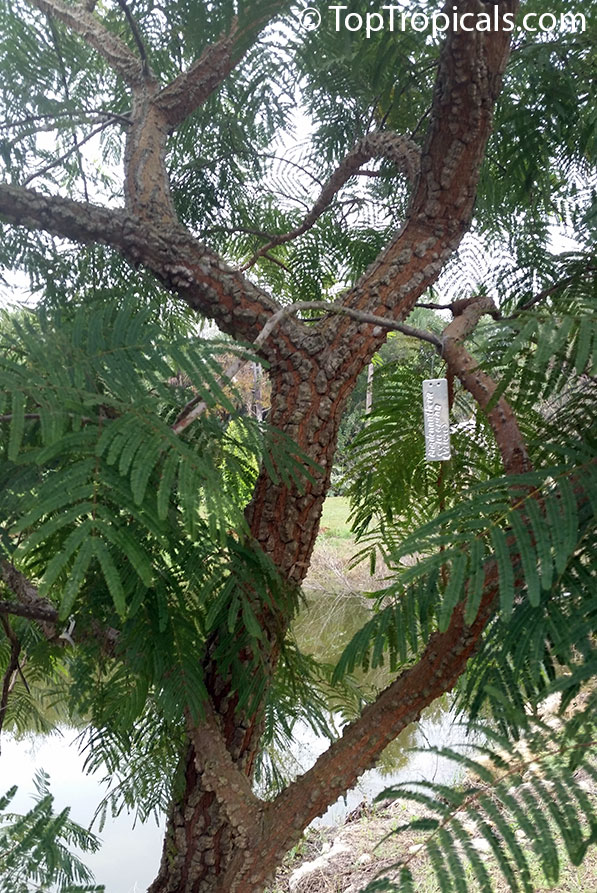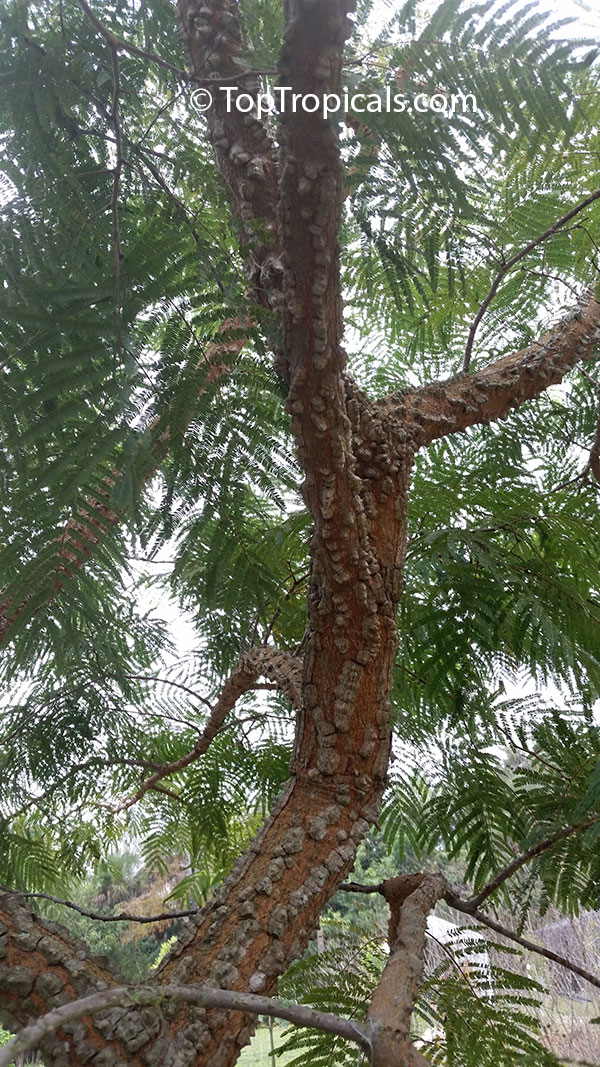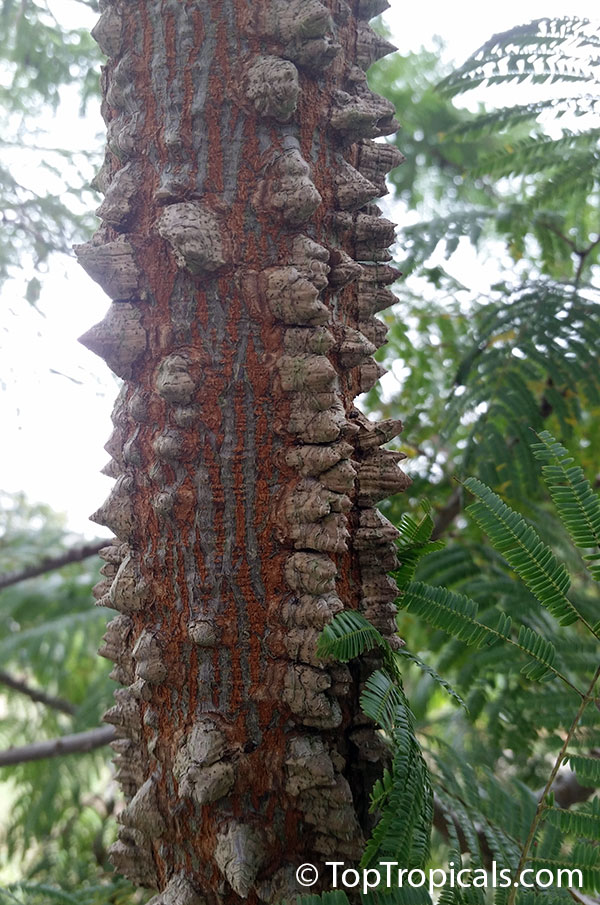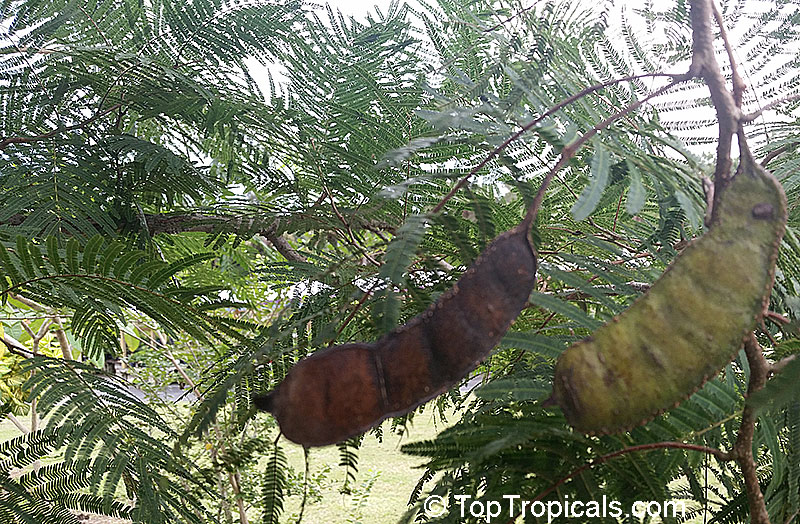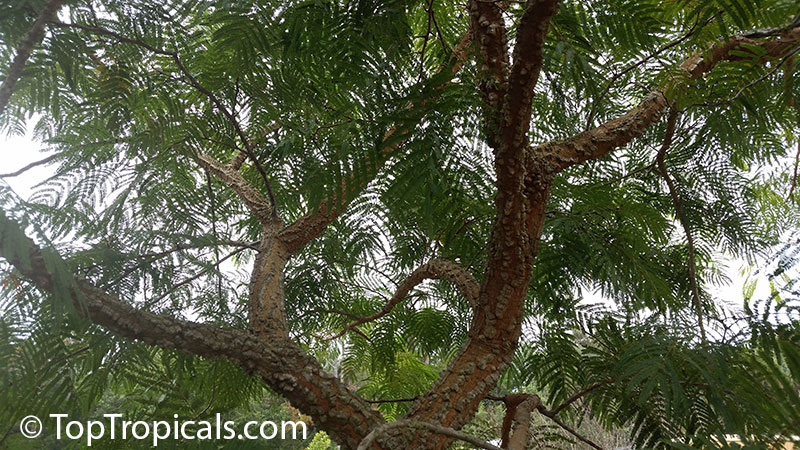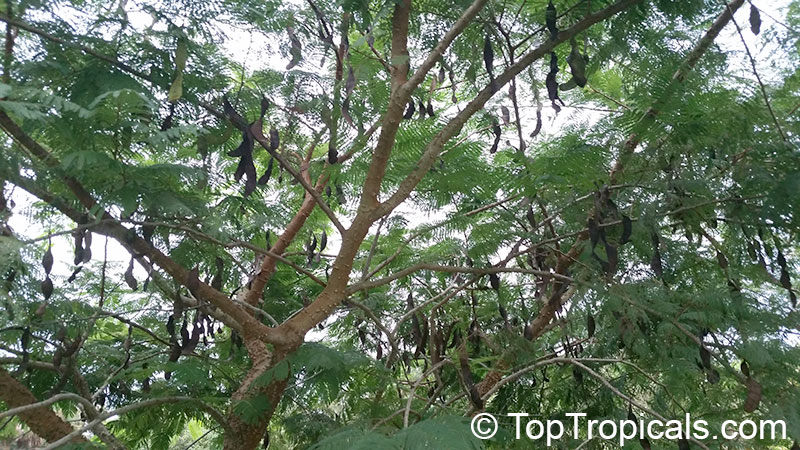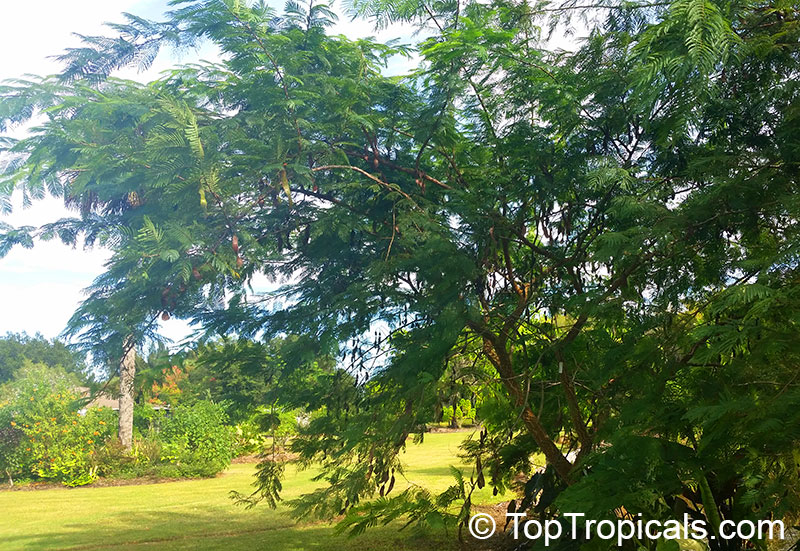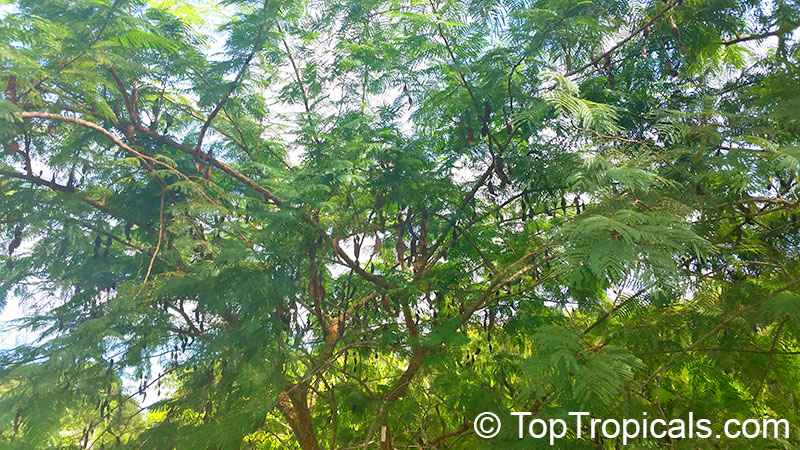Yopo - Plant Encyclopedia Results
Top Tropicals Plant Encyclopedia
| Number of plants found: 2 |
Botanical name: Anadenanthera peregrina
Common names: Yopo, Jopo, Cohoba, Parica, Calcium Tree
Family: Fabaceae
Subfamily: Faboideae
Origin: Caribbean and South America







Anadenanthera peregrina or Yopo is a tall tree with a distinctive horny bark and feathery leaves. It is also known for its pale yellow to white spherical flowers. This plant is native to the Caribbean and thrives in full sun and moderate amounts of water. It is suitable for growing in USDA zones 8 -10 and can tolerate cold temperatures of at least 30°F for a short time.
In addition to its attractive appearance, Anadenanthera peregrina serves as an entheogen and is used in healing ceremonies and rituals. The beans, also known as seeds, and falling leaves of this plant contain hallucinogenic properties. It is closely related to Anadenanthera colubrina, also known as Cebi or Vilca, which has a similar chemical makeup with its primary constituent being bufotenin.
Anadenanthera peregrina is not only visually appealing, but it also attracts hummingbirds, butterflies, and other wildlife. It is a good source of dietary calcium and has been explored for its potential medicinal uses. When grown in a pot in cold climate regions, it should be brought indoors during the winter and moved outdoors in the summer when the risk of frost is gone. It should be watered regularly, avoiding over watering, and pruning can be used to encourage new growth as needed. Overall, Anadenanthera peregrinaoffers both aesthetic and medical value.
Botanical name: Anadenanthera colubrina
Common names: Vilca, Huilco, Huilca, Wilco, Willka, Cebil, Angico
Family: Fabaceae
Subfamily: Faboideae
Origin: South America







This is a South American tree closely related to Yopo, or Anadenanthera peregrina, and has similar medicinal properties. Anadenanthera colubrina is known by many names throughout South America. In Peru it is known as Willka (also Wilca, Vilca and Huilca) which in the Quechua languages means "sacred". The species is found in Argentina, Bolivia, Brazil, Ecuador, Paraguay, Peru, Cuba, and Mauritius.
The trunk is very thorny. The leaves are mimosa-like, and they fold up at night. It tends to grow on rocky hillsides in well-drained soil, often in the vicinity of rivers. It grows quickly at 5-6 ft a year in good conditions. The growing areas are often "savannah to dry rainforest." Flowering can begin in as soon as two years after germination. In Chile, A. colubrina produces flowers from September to December and bean pods from September to July.
A sweetened drink is made from the bark. The tree's bark is the most common part used medicinally. Gum from the tree is used medicinally to treat upper respiratory tract infections, as an expectorant and otherwise for cough.
The main active constituent of Vilca is bufotenin. The black beans from the bean pods of these trees are used to make the psychedelic snuff called Vilca (sometimes called cebil).
In Brazil A. colubrina has been given high priority conservation status.
Use link to repeat this search:
https://toptropicals.com/cgi-bin/garden_catalog/cat.cgi?find=Yopo&search_op=and&keyword_op=and&language=e&number=10
&no_change_lang=1&user=tt&sale=1&first=0
